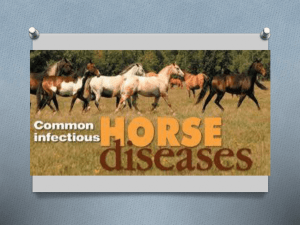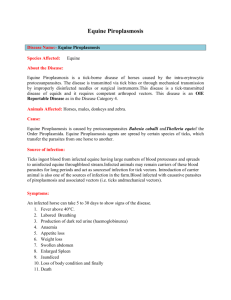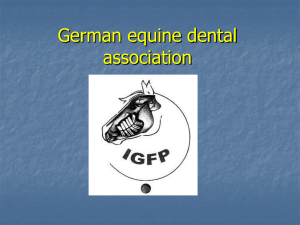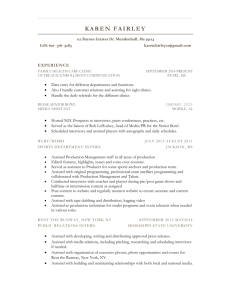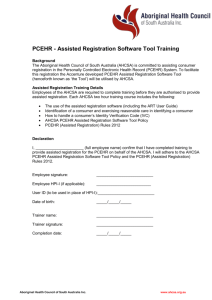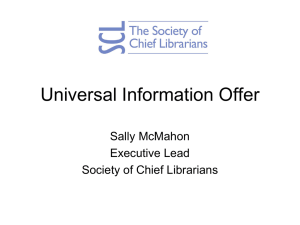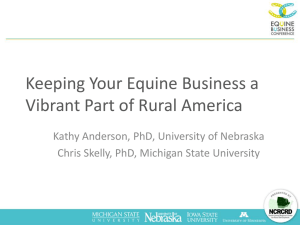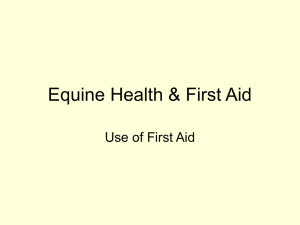Animal Assisted Psychotherapy (AAP)
advertisement
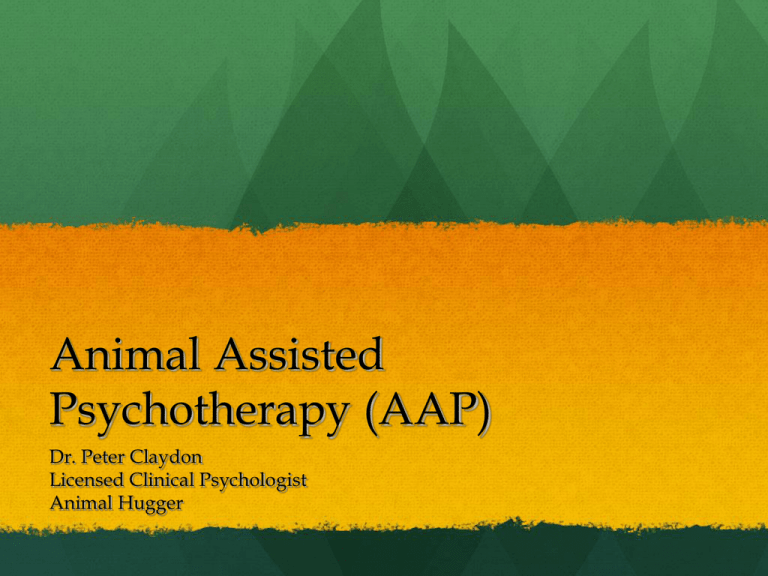
Animal Assisted Psychotherapy (AAP) Dr. Peter Claydon Licensed Clinical Psychologist Animal Hugger Outline Historical Antecedents Contemporary Perspectives Benefits and Limitations of AAP Examples and Descriptions of Canine and Equine Assisted Psychotherapy Historical Antecedents: Animal Assisted Therapy 9th c Belgium: disabled patients + farm animals 1792 Quakers in York, England: psychiatric in-patients + birds and rabbits 1860 Florence Nightingale, Notes on Nursing: the sick/invalids + small pets/bird in a cage Late 19th c Germany: epilepsy + birds, dogs, cats and horses Early 20th c US, Secretary of the Interior, Franklin Lane: psychiatric patients + dogs Early 20th c Sigmund Freud: psychiatric patients + dog “Jo-Fi” End of WWII, Army Air Corps Convalescent Center New York Serendipitous Discovery in the 1960s Boris Levinson, MD: 9 yr old patient + dog “Jingles” – the birth of animal assisted psychotherapy (“Pet Therapy”) OSU Psychiatric Hospital, Drs. Corsen + Corsen: socialization skill development of adult and adolescent inpatients + dogs Contemporary Research Barker & Dawson (1998): institutionalized patients and anxiety + dogs Barak et al. (2001): elderly patients with schizophrenia + dogs and cats Kovacs et al. (2004): middle-aged patients with schizophrenia + small animals Cobaleda-Kegler (2006): female juvenile offenders + cats Limitations: no comparison groups Trotter, Chandler, GoodwinBond and Casey (2008) “A Comparative Study of the Efficacy of Group Equine Assisted Counseling with At Risk Children and Adolescents” Group 1: Equine Assisted Counseling (EAC) Group 2: school-based group counseling (“Kids Connection”) Results showed EAC superior to school counseling on all measures Limitations…. Benefits of AAP 1. Symptom reduction, e.g. Depression; Anxiety; Attention Deficit and Hyperactivity Disorder; Conduct Disorders; Substance Abuse; Body Image Disorders; Post-Traumatic Stress Disorder; Schizophrenias; Autism Spectrum Disorders 2. Functional improvement in areas such as selfesteem; social and relational abilities; learning (e.g. memory, problem solving, decision making) Limitations of AAP 1. Not suitable for all patient populations, e.g. severe Anti Social Personality Disorder; certain psychotic states; serious dementia or brain damage 2. Some animals may not be suited for AAP Accrediting & Certification PET PARTNERS (formerly The Delta Society), est. mid-1970s <deltasociety.org> EFMHA, Equine Facilitated Mental Health Association, a subsidiary of PATH International Professional Association of Therapeutic Horsemanship International, est. 1969 (formerly NARHA) <pathintl.org> EAGALA, Equine Assisted Growth and Learning Association, est. 1999 <eagala.org> CBEIP, Certification Board for Equine Interaction Professionals, circa 2010 <cbeip.org> Local Equine Assisted Therapy Programs H.E.A.R.T.S Adaptive Riding Program (Santa Barbara) Windhorse Equine Assisted Therapy Center (Santa Ynez Valley) Reins of H.O.P.E. (Ojai) HEARTS Therapeutic Equestrian Center www.heartsadaptiveriding.org Accredited by PATH International Windhorse Equine Assisted Therapy Center Formerly Santa Ynez Valley Therapeutic Riding Program www.syvtherapeuticriding.org • H.E.L.P. - Horse Enlightened Learning and Psychotherapy Reins of H.O.P.E. • reinsofhope-ojai.org • Executive Director: Julie Sardonia, M.A., L.M.F.T. Local Canine Assisted Therapy Child Abuse Listening and Mediation (CALM): calm4kids.org Pilot Program, principal investigator Brenda Murrow, PhD candidate: bmurrow@calm4kids.org My Therapy Dog, Pixie

